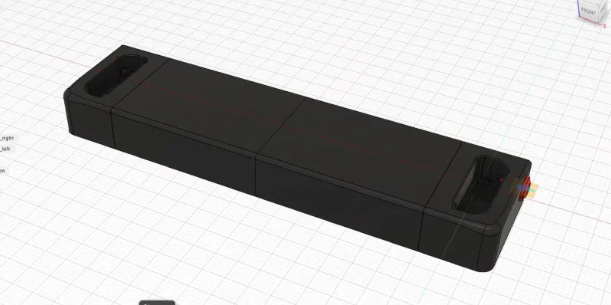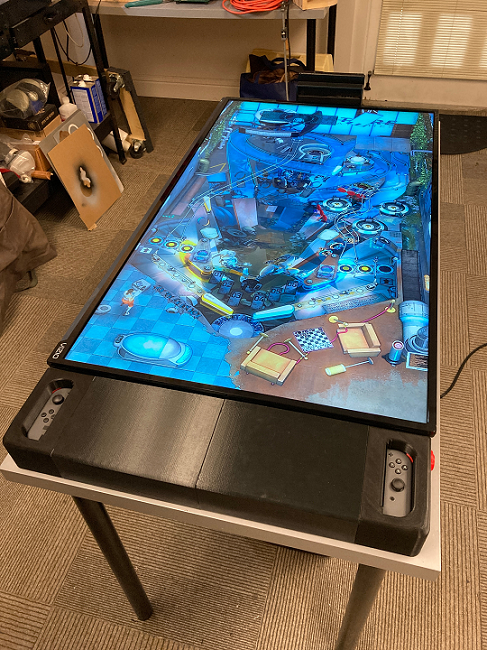How Hard is it to Print a Teeny-Tiny Miniature?
Luke at Geek Gaming Scenics wanted to know how much he could down-scale a print for a fantasy miniature on a resin printer and still see most of the detail. And, how small could a miniature be and still be paintable. He scaled up a mini STL file to 54mm and all the way down to 6mm.
They all printed successfully, but as he points out, minis that are designed to actually be 6mm have exaggerated proportions to look more natural, so scaling down a 32mm or 25mm mini makes things extremely difficult to paint.
Redditor Made Lucio Blaster Gift for Friend

What a kind friend! Redditor u/DDoom3099 created an Overwatch prop blaster to give as a gift. It was built using Adafruit 3D model files full tutorial is here in this Learn Guide.
Sulfuras Hand of Ragnaros Lunchbox #3DThursday #3DPrinting

Classic World of Warcraft fan? Here’s a Hand of Ragnaros Lunchbox from ahaggerty on Thingiverse:
This is a Hand of Ragnaros Lunchbox I created for a guildmate who recently got his Hand of Rag in Classic WoW.
Download the files and learn more

Every Thursday is #3dthursday here at Adafruit! The DIY 3D printing community has passion and dedication for making solid objects from digital models. Recently, we have noticed electronics projects integrated with 3D printed enclosures, brackets, and sculptures, so each Thursday we celebrate and highlight these bold pioneers!
Have you considered building a 3D project around an Arduino or other microcontroller? How about printing a bracket to mount your Raspberry Pi to the back of your HD monitor? And don’t forget the countless LED projects that are possible when you are modeling your projects in 3D!
How 3D Printing Helped Atlas Games Achieve Kickstarter Success
For over three decades Atlas Games has been in the business of fun. As a game innovator, their focus has been on tabletop play, including traditional card games, board games and roleplaying games.
Their latest endeavor Dice Miner is a dice-based game that for the first time in the company’s history was pre-sold through a Kickstarter campaign. Because of the high expectations Kickstarter funders have, an early visual of the product was necessary to show off the new game to potential backers.
In order to create these visual components, Atlas Games sought out our 3D printing services to prototype the game pieces they needed, and were able to utilize 3D printing for fast and cost-effective solutions from early prototyping to final-stage designs.
Jeff Tidball, Chief Operating Officer of Atlas Games, has a deep passion for games. For a look behind the scenes at Atlas Games’ newest creation, we interviewed Jeff to find out how the advantages of 3D prototyping was critical for Dice Miner’s Kickstarter success.
Could you give us a quick summary about Atlas Games as well as your latest game, Dice Miner?
Atlas Games is a tabletop game publisher with a 30-year history and deep catalog of board, card, and roleplaying games. We’re best known for card games like Gloom and Once Upon a Time. Dice Miner is a dice drafting game with 60 custom dice and a unique mountain component that organizes the dice across each game’s three rounds, showing which dice are available to choose at any given time as the game unfolds.
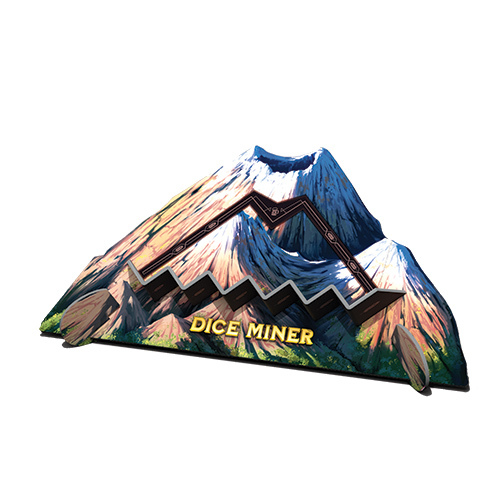
What was the purpose of using Shapeways to make prototypes for Dice Miner?
Dice Miner’s Deluxe Edition will have a plastic PVC mountain, so we used Shapeways to prepare early prototypes of that component. We used Shapeways for two purposes. First, to playtest using components as close as possible to the final version, to make sure they performed as we expected at the table. Second, to evaluate their producibility while holding physical objects, as opposed to needing to evaluate them only on screen, or in our imaginations.
How did you come to the decision to use 3D printing instead of other manufacturing methods?
Other manufacturing methods, to produce only one or two copies of a component like Dice Miner’s Deluxe Edition mountain, simply do not exist. (Maybe we could have hired someone to hand-sculpt one? I don’t even know.)
Did you already have technical knowledge in 3D printing? If not, was there a learning curve to getting into this technology?
Prior to Dice Miner, I had done very little 3D printing for a previous game’s miniatures prototype, also with Shapeways. However, we had the help of a consultant we had hired to create our plastic components, so we were able to use his model directly to produce the prototypes we used. So there was not much of a learning curve, but that’s because we had hired folks to help us already.
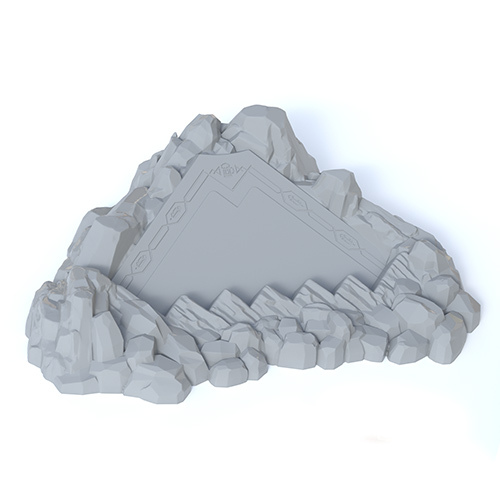
What material(s) do you print in and why?
We went with [Versatile Plastic, which are] cheap and fast for our game components. We were looking solely at form and function, rather than having any particular materials requirements.
How much time and/or cost were you able to save by prototyping with Shapeways versus using another method?
I don’t really have anything like that [to compare], since the other options don’t really exist. I suppose you could think about the complete disaster that would arise if a $3,500 mold was created wrong — having a physical prototype can help avoid that instance. Although it’s a small change, spending one or two hundred dollars to hedge against that downside seems pretty reasonable. Creating early prototypes also helped us get an advanced copy to an outside previewer, which helped illustrate to potential campaign backers how the game is played. Waiting for copies of the game from the production line would have simply been impossible. Without a preview of the game, I suspect fewer backers would have been comfortable joining the Kickstarter. Again, no hard-and-fast metrics, but I suspect we’d have left money on the table without being able to preview the game in that way.
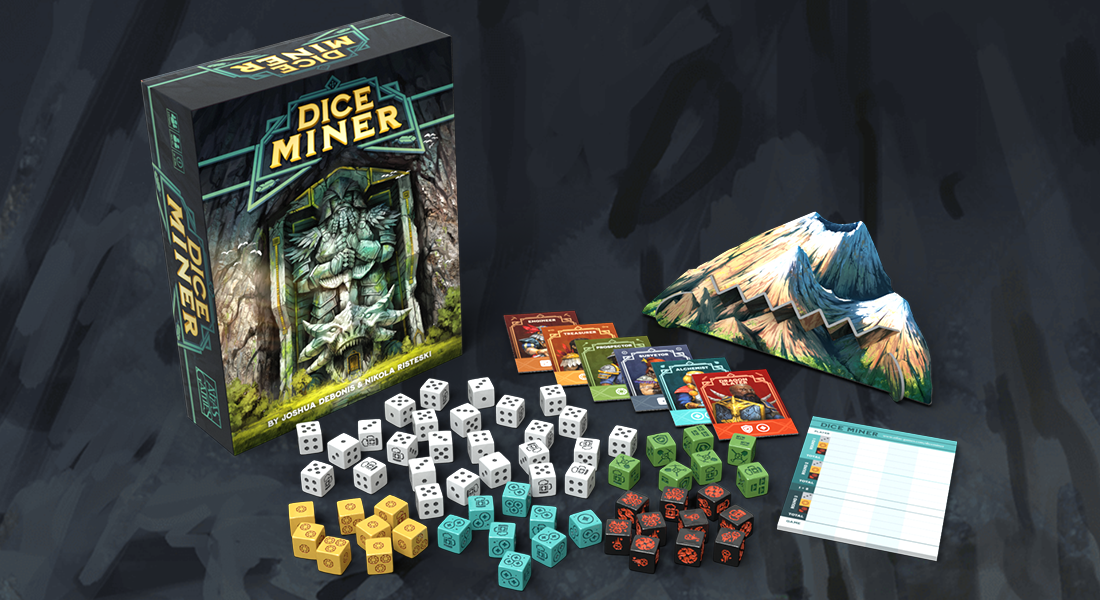
Not only was Atlas Games able to succeed on Kickstarter, but they surpassed their goal by almost $80,000. Our 3D prototyping solutions were instrumental in this process by providing a simple and cost-effective means to creating a visual preview of the game.
And more importantly, game fans would now be able to “draft the dice” in Dice Miner with the empowerment that they helped make the game happen by supporting it on Kickstarter!
Are you creating a new game or product for an upcoming Kickstarter campaign? Find out how Shapeways can help with your rapid prototyping needs today.
The post How 3D Printing Helped Atlas Games Achieve Kickstarter Success appeared first on Shapeways Blog.
How to Make an Attiny85 Console
If you’re looking to make your own mini console, this project by ardutronic123 on instructables is really neat.
This is how arduPlay looks like – a mini-game console based on attiny85. Put the game board in the right place and close the casing, thus pressing the board to the connectors. Now you can enjoy retro-style gameplay on your hand-built mini console.
Giant Pinball Machine Made by Hacking Nintendo Switch Controllers with 3D Printing
“Ever since I was a young boy I’ve played the silver ball…From Soho down to Brighton I must have played them all.” – Pete Townshend, The Who
Now that I’ve got “Pinball Wizard” stuck in your head, let’s talk about this classic arcade game. The concept is pretty simple: you use game paddles, or flippers, to manipulate the little metallic balls on the game field inside the glass-covered cabinet, or pinball machine, to score as many points as you can. It’s so popular that many gaming consoles like the hybrid Nintendo Switch, have their own versions, in case players can’t get themselves to an actual arcade—do those even exist anymore?
The Switch can be plugged into a docking system and played on a TV, or used as a mobile gaming device with a touchscreen interface. Naturally, many people have used 3D printing to hack the system, and customize the multi-use JoyCon controllers however they want, which brings us back to pinball. Maker Tommy Williamson is the founder of the Nerds&Makers community, which is exactly what it sounds like — the members visit the site to “showcase cool projects, to promote makers, to find inspiration, to teach, to learn and most importantly to connect with other makers and like-minded individuals.”
Williamson found that playing pinball on the Switch was difficult with the standard JoyCon shoulder buttons, which are decidedly not the typical flipper controls used to play the original game. He did what many a maker has done before, and used 3D printing to create a custom solution. The JoyCon dock he created, which he dubbed the SwitchPin, makes it much easier to play the game. Basically, the controller turns two buttons on the JoyCon into two different buttons for optimal pinballing.
“Sometimes two buttons really need to be two other buttons, and in those times we should not let anything get in the way of a creative solution,” Kotaku writer Mike Fahey wrote about Williamson’s creation.
The SwitchPin is an ingenious solution. Basically, Williamson modeled two blocks, and fitted them with pinball arcade flipper buttons. Then, he 3D printed the blocks out of black Hatchbox PLA on his Prusa i3 Mk3 3D printer; the buttons were printed in red, and he recommends using the printer’s quality settings due to the tight tolerances of the design. Once the print job was finished, he had to spend some time removing supports from the blocks, and then did a little sanding to, as he wrote on Thingiverse, “tweak things to be just right.”
He used 3/8″ x 5/8″ springs from a Harbor Freight box set to make the flippers work, and assembled the SwitchPin with M3 screws – no soldering required.
“I recommend drilling and tapping the frames, the center parts use nuts. I used M3 20mm and 25mm,” Williamson wrote. “To keep it from sliding around there’s small wells on the bottom for rubber pads. I used hemispherical ones from this pack.”
As you can see in the image above, there’s a slot for a JoyCon controller inside each block, and the controller’s shoulder buttons line up perfectly with the arcade button actuators. Then, Williamson added enough black plastic in between the two blocks to make the whole thing the length of his TV when on portrait mode. He removed the TV from the wall, set it on a table, placed the 3D printed SwitchPin at the bottom, set the Nintendo Switch to the correct view, and started playing the game the way pinball is meant to be played. It’s a pretty impressive setup.
You can get the 3D printing files to make your own SwitchPin pinball controller for free on Thingiverse. Take a look at the video below to see Williamson’s whole building process:
I was curious about what other interesting 3D printable Switch adaptations people have been making, so I searched a few 3D model repositories and found some interesting designs. Mechatronics engineer Julio Vazquez, also known as Vexelius, created these JoyCon adapters that allow disabled gamers to play with just one hand, and also came up with this Accessibility stand “to provide an easy to print and non invasive mod that will help disabled players enjoy a better experience.”
“The SL and SR buttons, which are small and difficult to press are now easier to reach, thanks to a couple of extensions; and an optional cross-shaped cover for the buttons will help users that might not have the accuracy to press the small buttons in the Joy-Con,” Vazquez wrote.
On Cults 3D, I saw this JoyCon Wristband for playing the “Just Dance” game on the Switch, which has two slot sizes, and I also found two different versions of a Nintendo Switch Joy Con Controller Drink Holder.
(Images courtesy of Nerds&Makers)
The post Giant Pinball Machine Made by Hacking Nintendo Switch Controllers with 3D Printing appeared first on 3DPrint.com | The Voice of 3D Printing / Additive Manufacturing.
How to Create an Original Board Game Using 3D Printing
Whether you’ve been developing board games for a long time, or you are just getting to new ideas to entertain people staying at home, now is a fantastic time to get started on designing and playing high quality, professional-looking board games. You can make a version of your game with cardboard or other craft materials around the house to start, but if you’re looking to make a polished version for play testers and potential investors, 3D printing is a great tool to bring your unique game to life.
3D printing allows artists and designers access to a higher level of creative control where they might have been limited by traditional manufacturing in the past. Here are just a few ways 3D printing facilitates the process of board game creation:
Fast
and Professional Prototyping
Once you have developed the concept of your game, you can start bringing each part to life by creating prototypes of your ideas. Creating a 3D design for the board, pieces and accessories not only means they can be easily reworked and refined but also reprinted any number of times. Creating prototypes will allow you to communicate your ideas to play testers and investors while you continue to develop and refine your game. And the faster you can produce the prototypes for your ideas, the faster you can improve and perfect your design. You can also test your design in multiple materials, anywhere from plastics to metals, to find which one suits your game the most.
Creating
the Board
The landscape of your game can be as simple or complex as your game needs it to be. 3D modeling easily allows for forming geometric shapes or creating pattern-based boards, and using 3D printing gives you greater freedom to explore more intricate details. The board can be designed with interlocking pieces, structure and scenery models, and can even integrate electronics. Depending on your needs, 3D printing allows for the aesthetic and functional ideas to come together smoothly with a polished appearance.
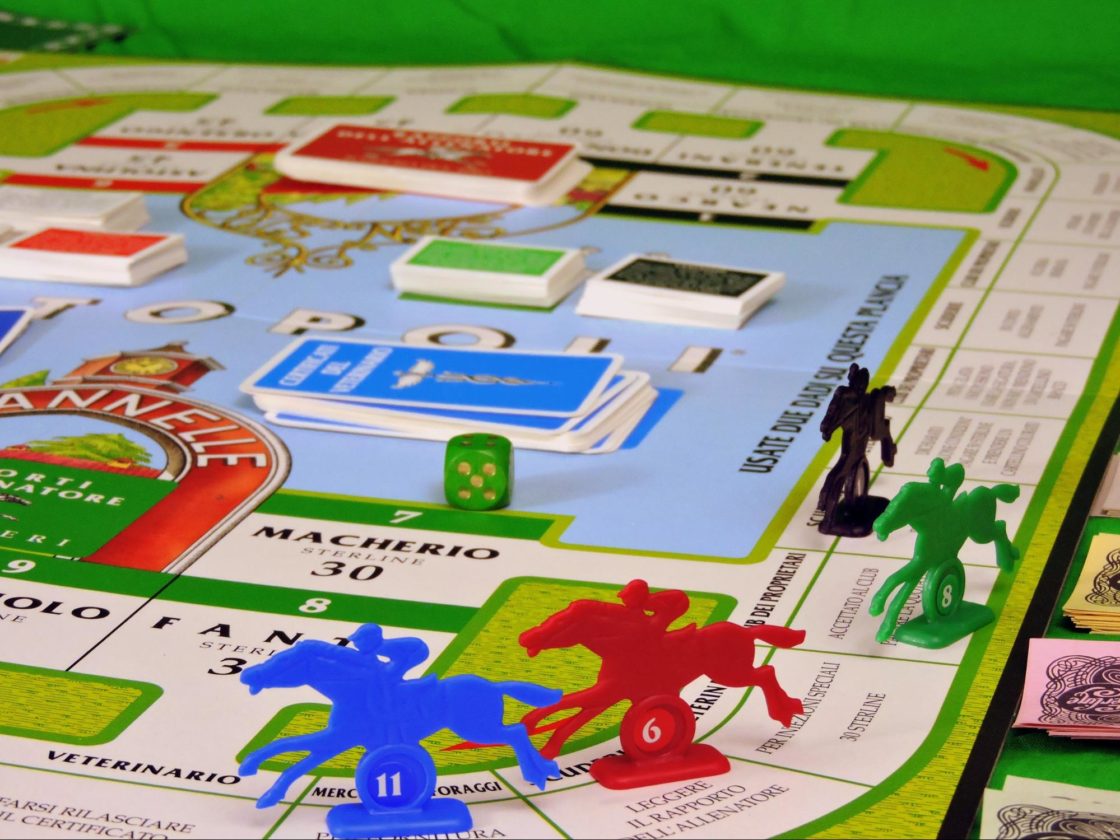
Creating
Original Game Pieces
There are a multitude of custom game pieces available for download on 3D model websites, but an original game idea requires original pieces. 3D printing makes it possible to create completely unique pieces in any printable materials. You can pair your game aesthetic to one or multiple materials for a uniformed design. Or create collector’s versions with game pieces printed in different materials. If you want to learn more about key features of game designs that have withstood the test of time, check out our article on game design here.
Play
Testing & Sharing
Because creating prototypes with 3D printing is much faster than using traditional manufacturing techniques, the process makes it much simpler to create playable versions for play testers. 3D printed parts can make the experience of playing the game smoother and clearer to people who are exploring it for the first time. Your play testers will be able to test your game idea by using real, physical objects, leaving less room for miscommunication during the feedback process. Having the digital files for all of the game’s printable pieces also means you can share your game with anyone anywhere in the world as they can upload the files and print their own through Shapeways.
Lower Start Up Costs with 3D Printing
The start up costs for creating a board game from scratch can be daunting if you’re adding in new equipment and materials. Crafting a board game by hand that looks professional requires a considerable amount of time especially considering the likely need to create several versions before arriving at a final design.
Making use of 3D printing technology and directing your manufacturing needs to Shapeways will allow you to cut down on those costs and put your efforts directly into designing and creating your final product. Ready to start building your own original game? We’d love to help!
The post How to Create an Original Board Game Using 3D Printing appeared first on Shapeways Blog.
Game Design and 3D Printing – A Perfect Partnership
Inherent to the 3D printing revolution are several amazing design
aesthetics that are ideal for prototyping toys in the game category.
Whether your game time involves traditional board games like Monopoly and Clue or you are an RPG (Role Playing Game) enthusiast engaged in dice-based fantasy like Dungeons and Dragons; the application of 3D printing can be a perfect fit.
Let me explain!
Perhaps you are a game designer looking to find ways of adding unique playing pieces to you game prototype. A quick review of existing board games provides a clear insight into how 3D printing can offer a great path to success.
The Aesthetics of Game Piece Design
No matter the board game, playing pieces have two key features that make them ideal for 3D printing:
1) Game tokens are never articulated
2) They are always a single bright color
Why is this? Functionally, these two design parameters have
been part of the manufactured gaming category for decades because both design
choices make the playing pieces simple to move around the board and visually
stand out to each of the players.
Whether one is looking at the “pawns” of Sorry or the silver object pieces of Monopoly, the essential play pattern of a board game requires players to easily identify all of the objects on the board (or “field”). And because board games require a higher cognitive level (compared to building blocks or action figures/dolls) the market is almost always an older child or adult, removing much of the risk of toy safety issues.
Not Just Classic Games, But Ancient Games!
Even going back to ancient games like Chess, the success and popularity of the board game was directly dependent on players being able to quickly recognize both their own pieces and their opponents. Likewise, visual identification within your own pieces is just as essential. Reviewing a Chess set, while the material for the pieces can vary from metal, porcelain, wood to plastic; the shape of the individual pieces are unique.
Like the colors of the two opposing “armies,” shape in game pieces like Chess help players (and spectators) to quickly identify each type of piece and likewise their unique abilities/moves. A queen’s silhouette looks nothing like a rook, and good luck mixing up a knight and a pawn visually!
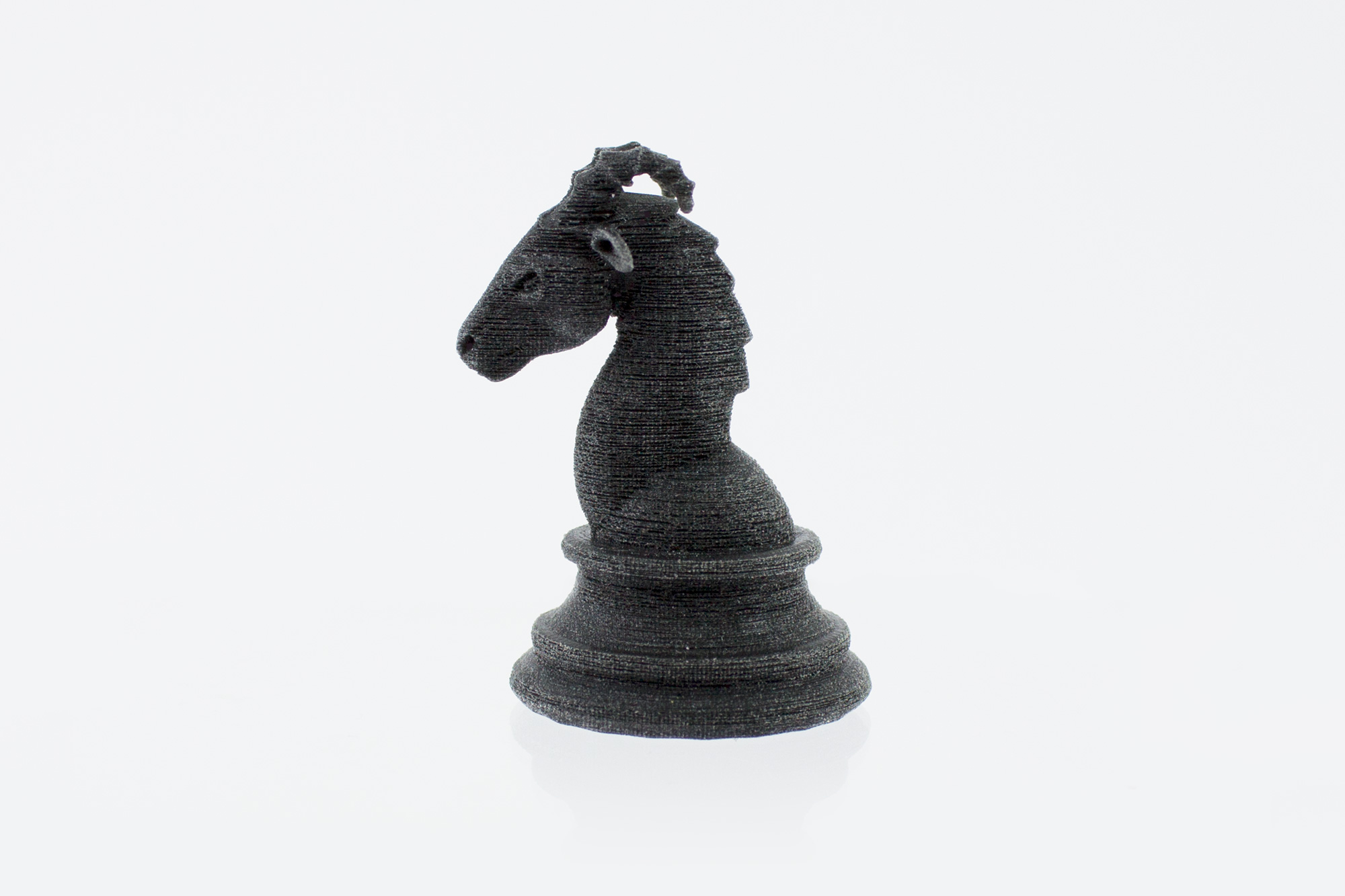
An even more simplistic example that also supports the need
for uniform shape and color is Checkers – or even Chinese Checkers. Both games
consist of “armies” of a single color attempting to outwit the opponent’s
pieces and move across a game field. Unlike Chess, Checkers in all of its forms
has one unified shape for all of the pieces. Color is the single factor used to
identify your team versus your opponents.
In modern manufacturing and licensing, there have been a
fantastic amount of Chess and Checkers sets that break these basic visual
rules, and to be honest, doing so often leads to versions of games that are
surprisingly more difficult to play.
As an example, in licensed Chess sets where the traditional-shaped pieces are replaced by characters from a specific intellectual property (i.e. Star Wars, Super Heroes, Harry Potter, etc) adding colors and unique shapes to every piece may make them visually fun to look at for a fan, but at the same time it makes them exponentially more difficult to identify during play. While these sets are fun to collect and display, attempting to play out a game with multi-colored, multi-shaped pieces adds to the difficulty of playing the game itself.
Why Simplistic Design is Needed for Game Pieces
The goal of a board game is to win, and winning takes more than strategy, skills or luck; it also takes focus and concentration. Simplifying the game token shape and using uniform single colors is a proven tactic for successful game design. This is the reason that manufactured games for the last 80 years have embraced this aesthetic technique. Likewise it is the reason handmade game sets going back thousands of years have also utilized this concept.
The human eye is instinctively drawn to color and shape and those are two of the major advantages to 3D printing game pieces with Shapeways. 3D printing is maximized when a single color and single shape are generated. The board game category is literally dependent on this design choice.
And 3D prototyping is in no way limited to designing playing pieces. Take a quick look at almost any board game and you will note that almost every part of the game that is not “the board” (usually made of cardboard or mashed pulp) is also a simple shape molded in a single color.
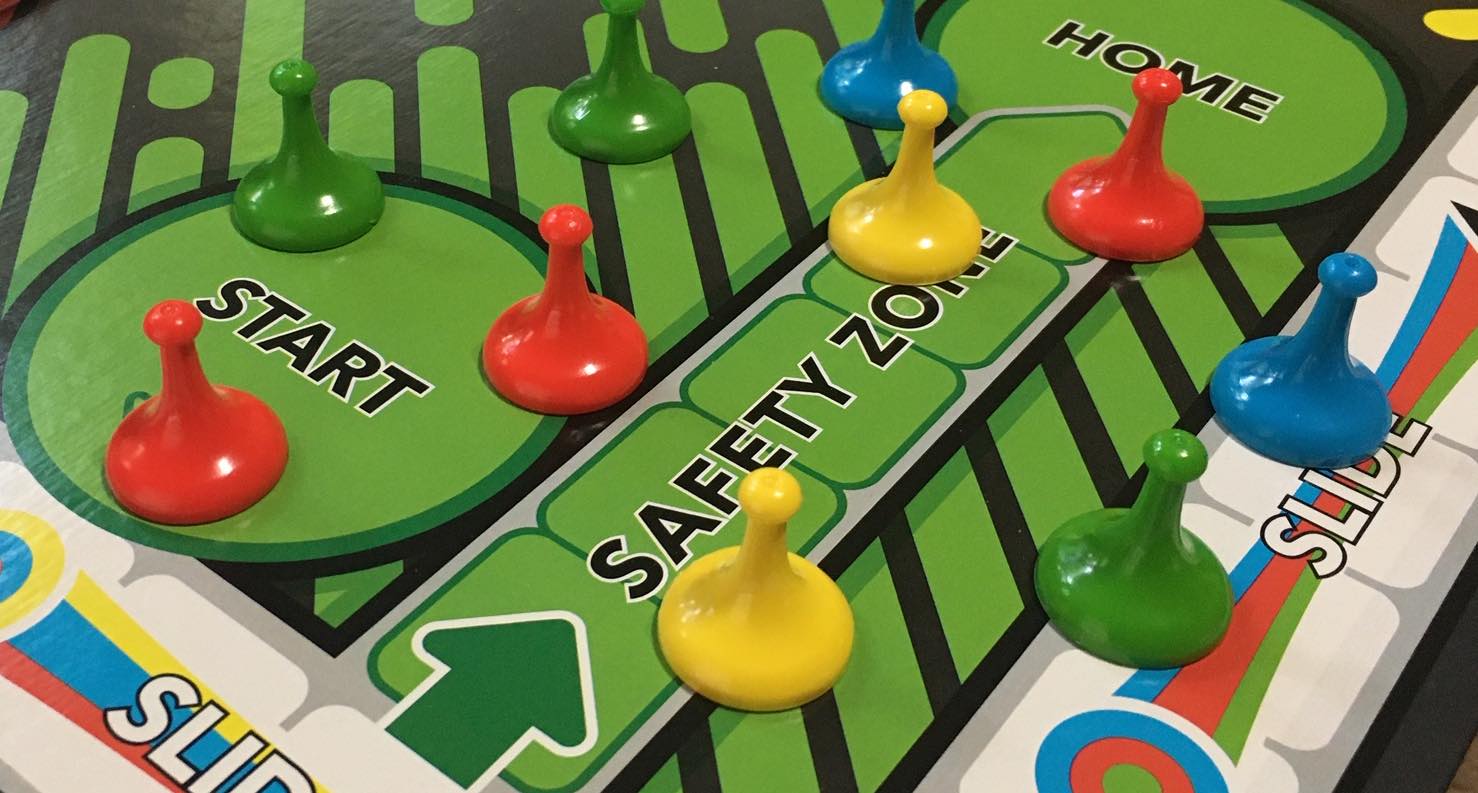
From the hotels and houses of Monopoly, to the large white spinner of Life. The list goes on and on. Weapons in Clue, avatars in Dungeons and Dragons, question pie pieces in Trivial Pursuit. Even the dice used in board games are in single colors and basic shapes. The very nature of board games and the need to quickly identify all items on the field invariably call for the use of single colors and easily identifiable shapes.
Both of these design aesthetics are maximized with the power
of 3D printing. And because no two games use the same tokens, pieces, avatars
or spinners, there is a constant need for new design cues, visuals and shapes
in the game category. Every game created needs its signature icons. And the
very nature of playability requires these icons and pieces to be single colored
and simple in shape.
3D Printing’s Core Competencies are an Ideal Game Design Solution
The flexibility and customization of 3D printing has empowered designers using the technology to see their imagination take physical shape. In a product category like gaming, the ability to prototype unique single-color pieces and game tokens is not only an advantage, it is essentially required.
So, if you are a game designer looking to inspire and wow players or potential retailers, Shapeways’ 3D printing technology not only provides an easy-to-use prototyping solution for unique game pieces, but is one that embraces and maximizes the very design ascetics that have made board games popular and fun to play for thousands of years!
The post Game Design and 3D Printing – A Perfect Partnership appeared first on Shapeways Blog.
NEW GUIDE: Pathfinder Robot Companion @adafruit @johnedgarpark @sugru #apexlegends

Pathfinder is a fan favorite character from the game Apex Legends. In this new guide, John Park shows you how to build your own interactive desktop Pathfinder desktop companion, complete with Adafruit PyPortal chest screen, voiceover lines from the the game, and glowing LED robot eye!
We’ll build Pathfinder using 3D printed parts, Sugru moldable glue, and an array of electronics, all running on the touch-screen display PyPortal coded with CircuitPython.

Note: This project was built in partnership with Sugru — check out this link for a chance to win a 3D printer to help you build your own Pathfinder.


